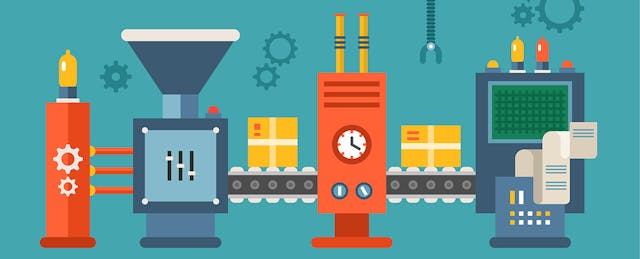Two years ago I attended an edtech conference focused on the then up-and-coming trend of makerspaces. The opening keynote speaker ended his presentation with a charge for all in attendance: “I hope that makerspaces don’t become an edtech fad that goes away as quickly as it has risen to popularity; I hope you all can figure out how to do it right.”
So what is the “right way” when it comes to using makerspaces? And now that they have been established in schools all across the globe, how can we measure the impact that makerspaces have on student learning and achievement?
Most facilitators would agree that standardized test scores may never accurately reflect the impact that makerspaces have on student achievement. Rather, it is a combination of the design thinking processes, service learning experiences, and 21st century skills being developed in makerspaces that are positively impacting student learning.

Design Thinking
Design thinking is a problem-solving framework that helps learners define problems, empathize with those facing or addressing those issues, develop prototypes of possible solutions, and hone those prototypes through multiple iterations until they have generated a viable solution to the challenge at hand.
Schools that have implemented design thinking in the makerspace have witnessed how this process gives students the structure they need to carefully plan their designs and record their thinking before diving into the creation phase. Possibly the most important phase of the design thinking loop occurs after the initial design prototype is complete, as students reflect on their creation and make plans to iterate for improvement, and the design cycle begins again. Faith Lincicum, Effectiveness Coach for the Waukesha School District in Wisconsin says, “The design loop allows our students to develop a growth mindset. I am continually amazed at how willing students are to attack a problem over and over until they find a solution that works.”

Service Learning
Service learning is an instructional approach in which students apply academic knowledge and skills to address genuine community needs. When the design thinking process is connected to service learning in the makerspace, the learning process is taken to a whole new level as students develop a sense of agency and deep empathy for their end user.
In the Round Rock School District in Austin, Texas, 8th grade students participate in a service learning project where they identify a need in their community, develop a plan and solution to address that need, and then utilize the makerspace to implement their solution. Last spring, a student constructed a bed to address the needs of foster children in his community. “This project encourages our students to take action and celebrate their commitment to service; they advocate for issues they are passionate about and create solutions that impact the lives of others,” says Doriane Marvel, IB Coordinator for the Round Rock School District.
21st Century Skills
The World Economic Forum recently released their Future Jobs Report, predicting the top 10 skills needed to thrive in the workforce in 2020. Alyssa Voigt, Makerspace and Media Center Coordinator for the Kettle Moraine School District in Wisconsin says that “students learn the skills of solving complex problems, critical thinking, creativity, decision-making and cognitive flexibility while in the makerspace.” It is no coincidence that these skills make up half of those listed in the Future Jobs Report Top 10. In fact, on any given day in a makerspace, you are likely to witness a majority, if not all, of the skills listed on the report. Voigt concludes: “These skills will help our students regardless of their academic or professional path in life.”

Conclusion
Data concerning whether makerspaces “work” will likely not exist in the form of standardized test scores. But what we do know right now is that if makerspaces provide opportunities for students to understand and implement design thinking, service learning, and 21st century skills, those students are going to be more prepared for a future workforce that is going to require these very skills.
Fast-forward to a few years from now, and imagine a conference similar to the one I attended, with the same keynote speaker addressing an audience of passionate maker-educators. This time, though, he simply stands up and begins a slow clap: we have finally figured out how to do it right..


